CEO Ekaterina Osadchuk and the INDIGO Tech Recruiters team conducted the second annual review of C-level salaries in IT. Recently, we published a review of the salaries of C-Level executives.
Here we go into detail and consider individual positions. Let’s start with the role of COO.
The role of COO
The role of the chief operating officer is the most obscure position in any business, and in the information technology sphere in particular.
Ideally, there is a CEO who forms the strategy of a business and directs efforts to grow and develop, and a COO who is responsible for implementing strategy as well as building and monitoring processes. The first role is focused on the external activities of the company, while the second takes care of the internal processes.
In the absence of a COO, the CEO tries to perform all the tasks at once — strategy formation, delivery, communication with partners and key customers, control of financial indicators, marketing, sales — and finds time to build processes in the company. This is difficult and can cause all kinds of problems, creating a situation when there is one bottleneck after another.
In theory, the chief operating officer is the main support for the chief executive, no matter what their exact job responsibilities are. In reality, no executive director, regardless of experience, can cover the complex aspects of managing all the company’s functions.
In some ways, the role of COO is similar to that of a diagnostician — sometimes you have to act as an ambulance, sometimes you have to be proactive and take preventive measures.
If everything is slowing down and it’s time to reanimate the business, you could also use some help from a COO.
However, it’s better to keep your finger on the pulse of your business in advance and monitor the availability of resources for a smooth operation — people, money, equipment, materials. You should monitor the legality of the company’s actions and take care of legal protection, as well as organize the rational use of resources by optimizing, automating processes, and minimizing the expenses of the company.
An ambiguous understanding of the role and its functions leads to a wide salary range for this position.
This material is based on data obtained from 29 COOs working at IT companies in Ukraine. 62% of the companies are founded in Ukraine, 13. 79% in the US or Canada, and 10. 34% in Europe.
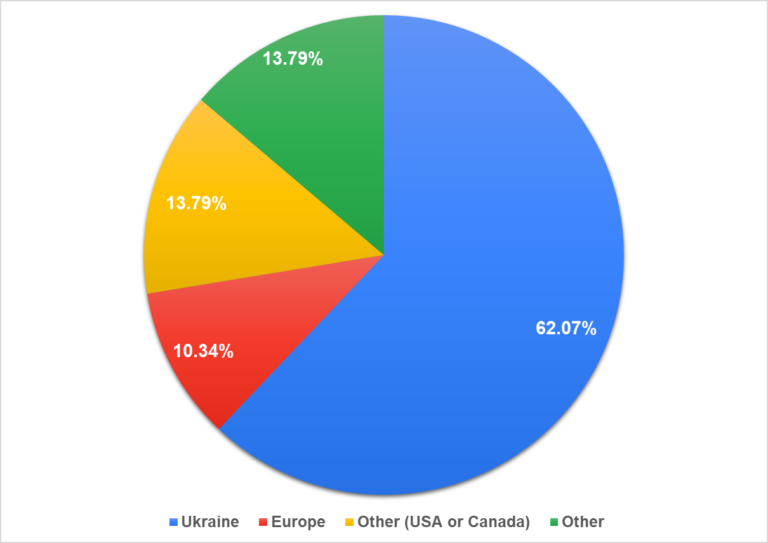 Figure 1. Country of headquarters
Figure 1. Country of headquarters
6. 9% work in large companies with more than 800 employees. 13. 79% work in companies with 201 to 800 employees. The majority of respondents (34. 48%) work in companies ranging from 81 to 200 people. 20. 69% were in companies of 21 to 80 people, and 24. 17% in companies of up to 20 people.
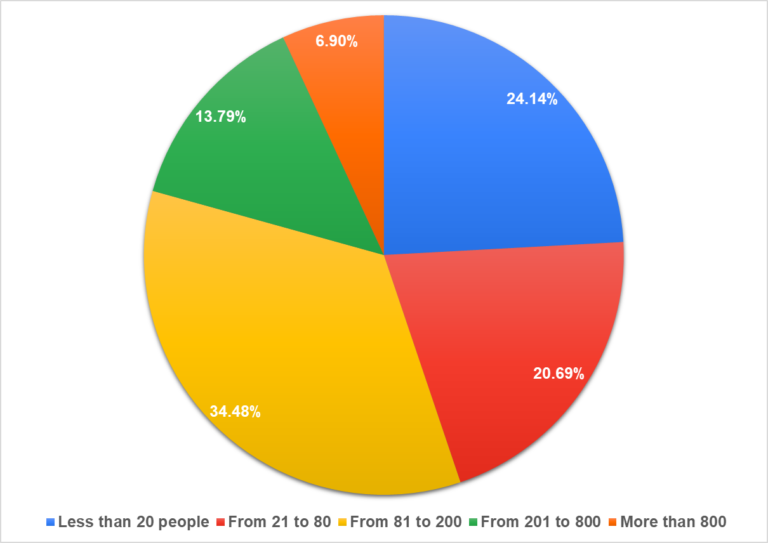 Figure 2. Number of employees in the company.
Figure 2. Number of employees in the company.
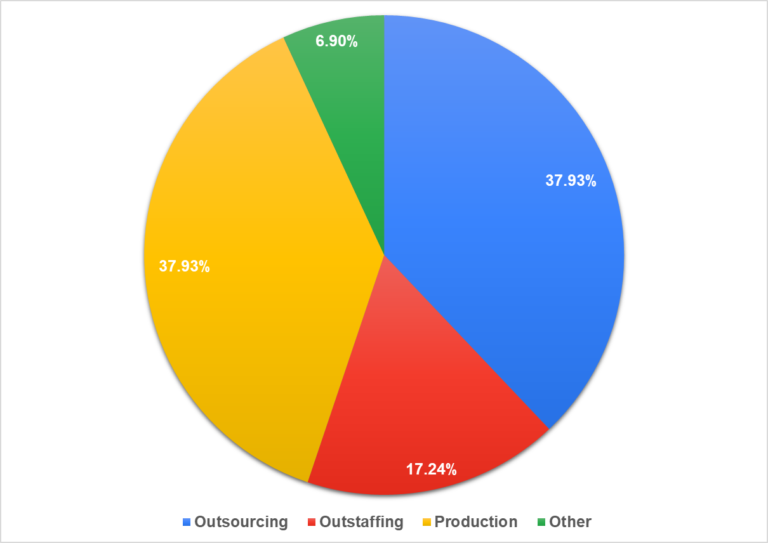 Figure 3. Percentage of participants from outsourcing, outstaffing, and product companies.
Figure 3. Percentage of participants from outsourcing, outstaffing, and product companies.
The salary range
The variety of responsibilities and different levels of companies also affects the width of the salary range.
 Figure 4. General salary range.
Figure 4. General salary range.
We’ll show how the experience, age, and gender of a COO—as well as the company’s age and size—impacts the salary level.
We would like to draw your attention to the fact that we excluded items for which we received less than four responses, since they were not valid. For instance, if only four COOs answered that their Top Manager experience lasted 10 years, we excluded the responses as not being representative and took into consideration only those with five or more responses.
 Figure 5. Salary range + bonus on the basis of experience in top-management.
Figure 5. Salary range + bonus on the basis of experience in top-management.
The figures show that the average salary increases with years of experience as a Top Manager. The median salary of COOs with four to five years of experience in a top position is $6, 000, and the average salary is $5, 920.
The income of a COO depending on job tenure is presented below.
 Figure 6. Relationship between COO’s salary and job tenure.
Figure 6. Relationship between COO’s salary and job tenure.
The age of the company doesn’t significantly affect COO’s salary range.
 Figure 7. Relation between COO’s salary and company age.
Figure 7. Relation between COO’s salary and company age.
15 of 29 respondents work in companies with less than $3 million turnover. Their salaries don’t differ much, whether the revenue of a company is under $1 turnover or more than $3 million.
 Figure 8. Relation between COO’s salary and company turnover.
Figure 8. Relation between COO’s salary and company turnover.
The majority of COOs in our survey are between the ages of 31 and 40. The median income at this age is $5, 000, the average income is $5, 394.
 Figure 9. Relationship between COO salary and age.
Figure 9. Relationship between COO salary and age.
There’s a significant difference in COO salary based on the employee’s gender. Men receive a median salary of $5, 000, and women receive $3, 500.
 Figure 10. Relationship between COO salary and gender.
Figure 10. Relationship between COO salary and gender.
The median COO salary in outsourcing and product companies is equal: $5, 000. However, the average salary is higher for respondents working in product companies: $6, 155.
 Figure 11. Relationship between COO salary and type of company.
Figure 11. Relationship between COO salary and type of company.
The factors of motivation and demotivation
In addition to the level of rewards, we were interested in the factors of motivation, demotivation, and certain working conditions.
The salary level for COOs is not among the highest-ranking motivation factors. It’s about as important as a culture of trust in the company (58. 62%). The most important motivation factors for COOs are professional development (75. 86%), freedom in decision-making (68. 97%), and bonuses (51. 72%).
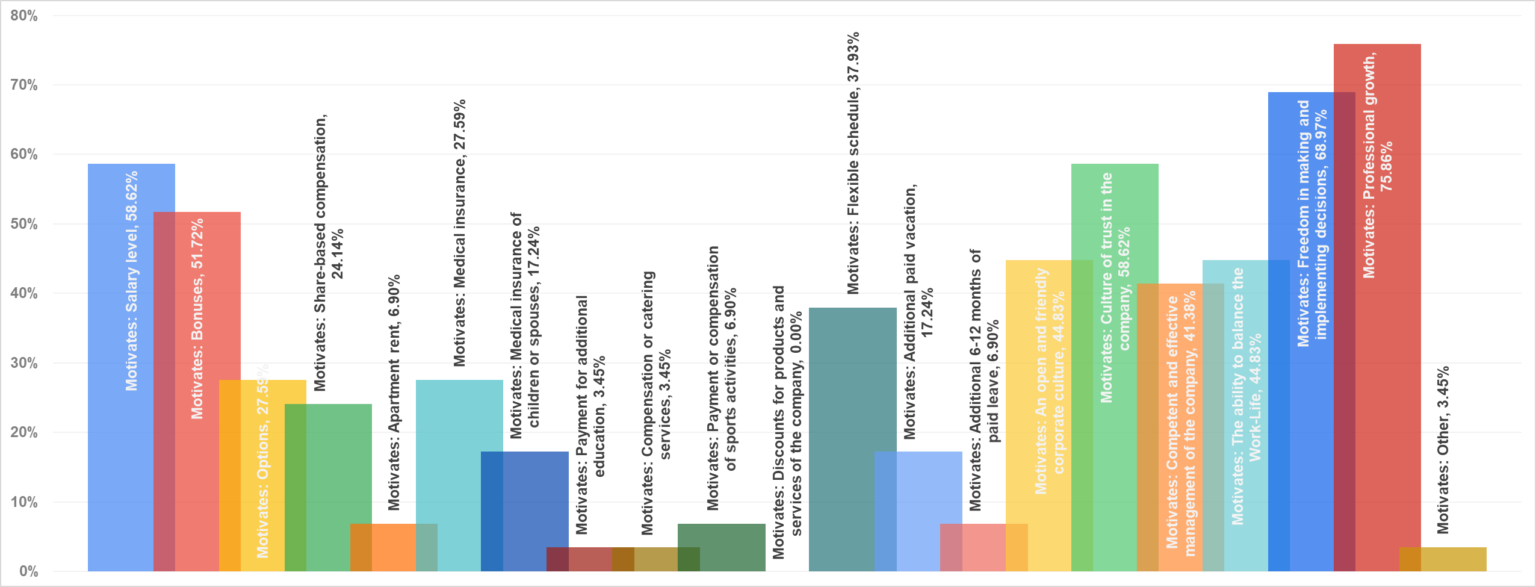 Figure 12. Motivation factors for COOs.
Figure 12. Motivation factors for COOs.
Operating Directors are primarily demotivated by a lack of professional development and a lack of work-life balance (58. 62%), a culture of distrust (55. 17%), incompetent and ineffective management, and a lack of freedom in decision-making (51. 72%).
 Figure 13. Demotivating factors for COOs.
Figure 13. Demotivating factors for COOs.
Unfair pay demotivates 48. 28% of respondents.
Most COOs receive a bonus depending on the company KPIs: 48. 28%.
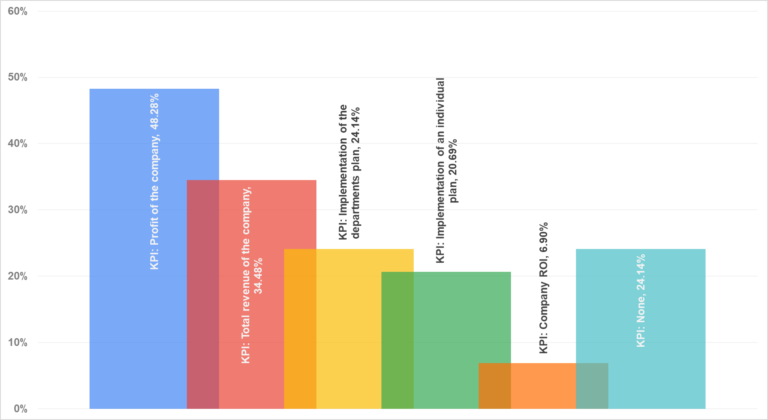 Figure 14. KPIs for which the bonus is paid.
Figure 14. KPIs for which the bonus is paid.
65. 52% of COOs work only at the office, while 31. 03% have the opportunity to sometimes work remotely.
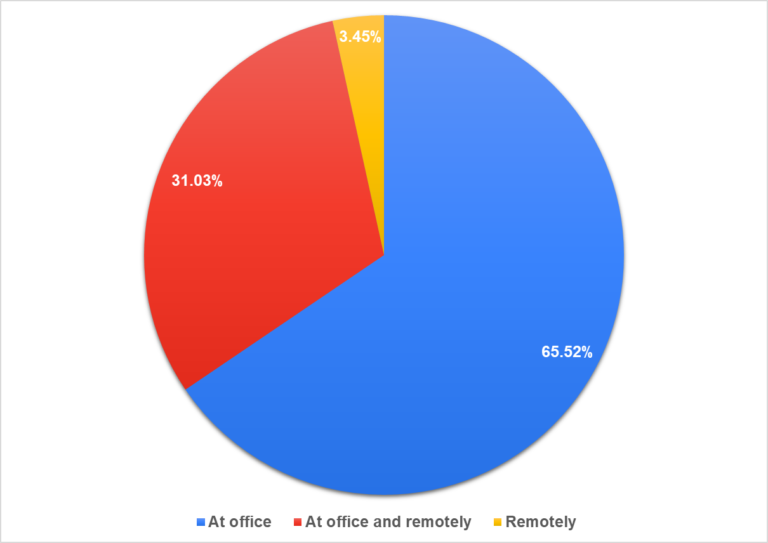 Figure 15. Work formats.
Figure 15. Work formats.
It’s not surprising that 55. 17% of COOs (compared to 74% last year) are registered as individual entrepreneurs. That’s IT, after all.
 Figure 16. Types of employment.
Figure 16. Types of employment.
75. 86% of respondents have their salaries pegged to the $.
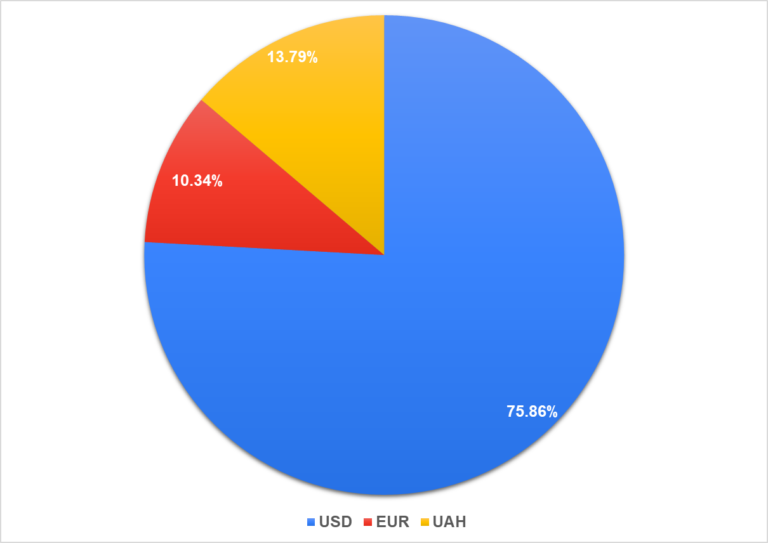 Figure 17. Currency pegging.
Figure 17. Currency pegging.
In the next review, we plan to share information about CTO compensations.
We hope you’ll find the information useful for making the right business decisions.
Stay in touch!
We thank Vitaliy Luzhentsov for professional assistance in processing the data.
Author: Ekaterina Osadchuk , CEO of Indigo Tech Recruiters








 Success!
Success! 